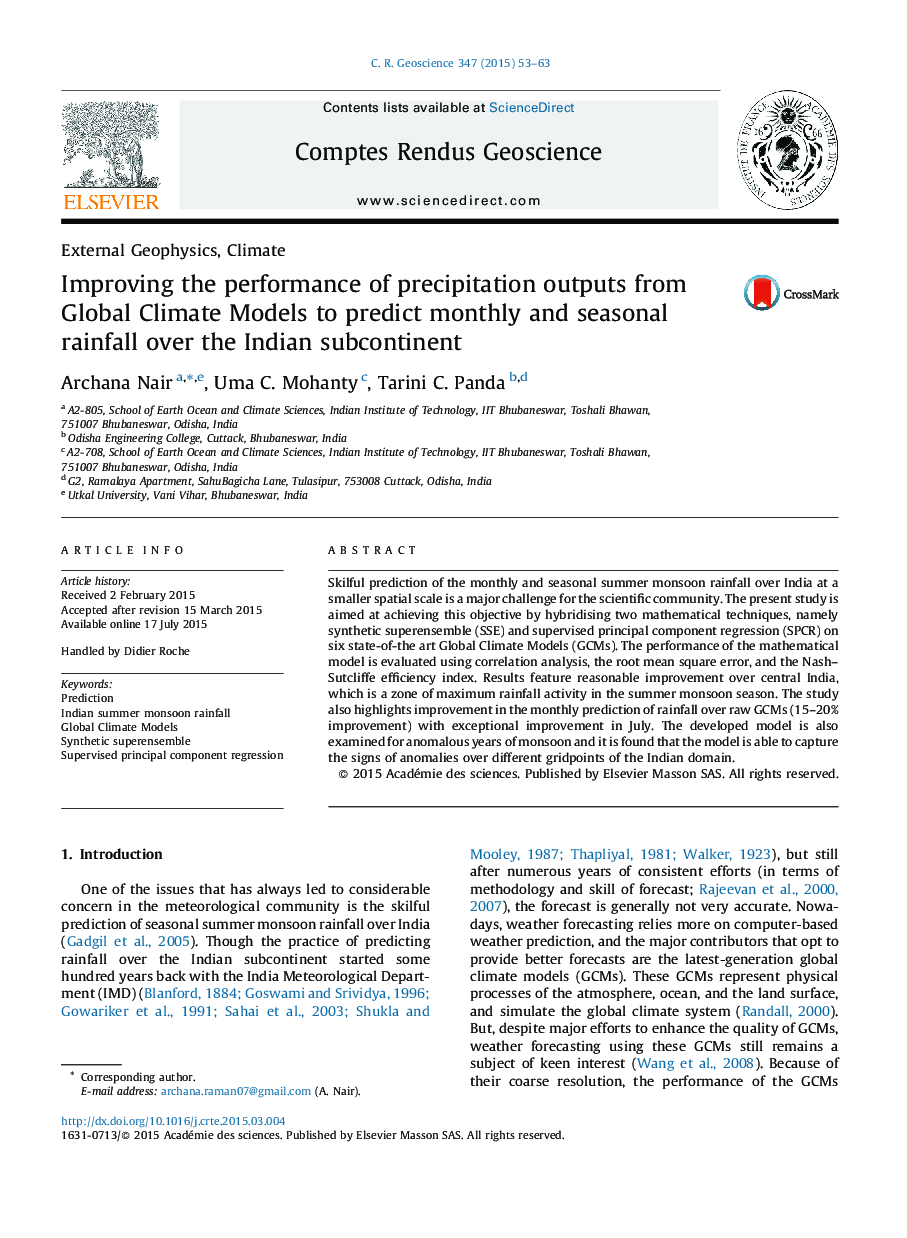| Article ID | Journal | Published Year | Pages | File Type |
|---|---|---|---|---|
| 4462221 | Comptes Rendus Geoscience | 2015 | 11 Pages |
Skilful prediction of the monthly and seasonal summer monsoon rainfall over India at a smaller spatial scale is a major challenge for the scientific community. The present study is aimed at achieving this objective by hybridising two mathematical techniques, namely synthetic superensemble (SSE) and supervised principal component regression (SPCR) on six state-of-the art Global Climate Models (GCMs). The performance of the mathematical model is evaluated using correlation analysis, the root mean square error, and the Nash–Sutcliffe efficiency index. Results feature reasonable improvement over central India, which is a zone of maximum rainfall activity in the summer monsoon season. The study also highlights improvement in the monthly prediction of rainfall over raw GCMs (15–20% improvement) with exceptional improvement in July. The developed model is also examined for anomalous years of monsoon and it is found that the model is able to capture the signs of anomalies over different gridpoints of the Indian domain.
